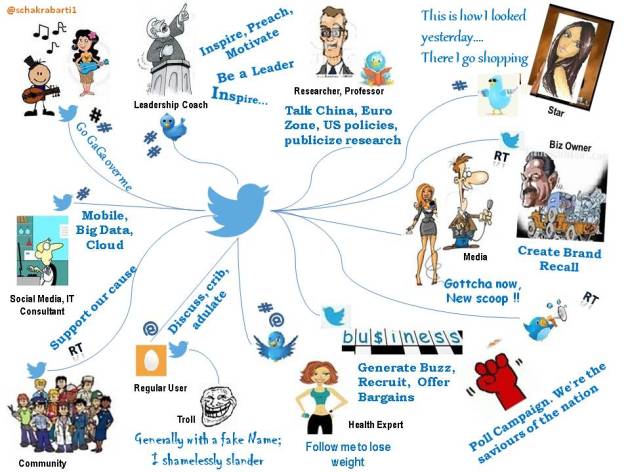Good decisions come from experience, and experience comes from bad decisions.
Better still if the experience and wisdom are gained by observing the results of bad decisions made by others. However, the fact is that of all the decisions that we make at each and every stage of our life and in our career, only some are good choices.
We are all likely to make bad decisions at some point or the other. And mind you ‘Not all our bad decisions are mistakes’.
.
So what differentiates a bad decision from a mistake?
At times, we are faced with situations where we do not have an idea what the best choice might be. What do we do if we have to respond very quickly and there is not enough time to gather information? In such situations, we make decisions and take actions using our intuitions. As intuitions come naturally to most of us, the use of intuitions helps us to arrive at conclusions rapidly and rather implicitly. However, intuitions are also hardwired with cognitive biases, which substantially influence our thinking. Without these biases and heuristics many decisions would never be made.
Here we need to bear in our minds that while the use of intuitions is certainly beneficial in some circumstances, say where innovative or creative thinking is required, it can also lead to errors in others. In the process we may be prone to making a mistake.
Here we need to bear in our minds that while the use of intuitions is certainly beneficial in some circumstances, say where innovative or creative thinking is required, it can also lead to errors in others. In the process we may be prone to making a mistake.
Alternately, there are situations where we make the wrong choice in spite of knowing that it is not really the right thing to do, but we take the risk believing that we will get away with it. If we manage to get away, we do not hesitate to repeat our wrong actions. On the other hand, when we receive flak for our choices, then we try to pass off our bad decisions as judgment errors or mistakes.
Owning up a bad decision
As the deliberateness of our action is a key factor that separates a bad decision from a mistake, it is relatively easier for us to admit a mistake, but it is much harder to accept that we have consciously made a bad choice. People are generally more unforgiving towards those who have deliberately acted in a way that was likely to produce a bad outcome.
Dov Seidman, an observer of societal trends in the US, notes that passing off a bad decision as a mistake and rendering an apology has almost become a reflexive response among leaders. Every other day, some chief executive, politician or other prominent figure is seen apologizing for their mistakes.
When a bad decision is re-labelled as a mistake, it no longer appears to be something that is done entirely on purpose. Thereby it reduces the extent to which others perceive the involvement and contribution of the person behind the error and so the person is more likely to be forgiven and the action is more likely to be forgotten.
However the distinction between the mistakes and bad decisions is not always so clear nor is it so simple to arrive at. At times we choose A over B for reasons that we often don’t understand. Our intuitions, cultural biases, emotions and other contextual factors implicitly come into play and fundamentally affect the way in which we gather and process information to make decisions. People are susceptible to think and act in a particular manner due to their cultural orientation. For instance, whereas, we find that the word ‘sorry’ is one of the most abused words in the US, on the other hand the to say 'sorry' is still an ‘alien’ concept for many unruly parliamentarians in India, who do not regret their display of uncouth public behaviour.
A decision based on perception of ‘what is right’ for the one who makes the decision may not be perceived in a similar manner by others who are impacted differently by the decision. Here the distinction between bad decision and mistake gets blurred.
.
Learning from mistakes and bad choices
Both mistakes and bad choices provide the opportunity to learn and grow from them. The best way to look at mistakes is to use them as stepping stones to move forward towards our goals.
Owning up our decisions is the first step towards improved decisions. We can learn from our mistakes only when we admit the mistake, offer a sincere apology for it and own up the mistake instead of trying to justify the reasons which led to it. Analyzing our mistake by recognizing the situation under which we made the mistake and identifying the wrong action on our part will help to avoid repeating the mistake.
Furthermore, though presence of cognitive biases hugely impact decision making, yet most people are generally not aware of them or like to believe that they are susceptible to implicit biases during decision-making. Recognizing that the biases exist can help us to consciously put some plans and processes in place to address through the biases and balance our intuitions with rationality.
To arrive at better decision outcomes and avoid repeating the same mistake over and over again, we need to work towards:
To arrive at better decision outcomes and avoid repeating the same mistake over and over again, we need to work towards:
- Owning up our decisions.
- Analyzing our mistakes.
- Recognizing the situation if it arises again.
- Remembering the mistake we made.
- Being aware of our biases.
- Being aware of likely outcome.
- Changing our mistake behaviour.
Lastly when perceptions about the correctness or righteousness of a significant decision vary, then it becomes very necessary to assess the impact of the decision of different people, gain buy in of the people who are impacted by the decision, set ground rules and work towards a goal or desirable consequences while acting in appropriate manner to avoid undesirable consequences.
Better awareness will not necessarily guarantee better decisions, but they can make them more likely.
.
References:


